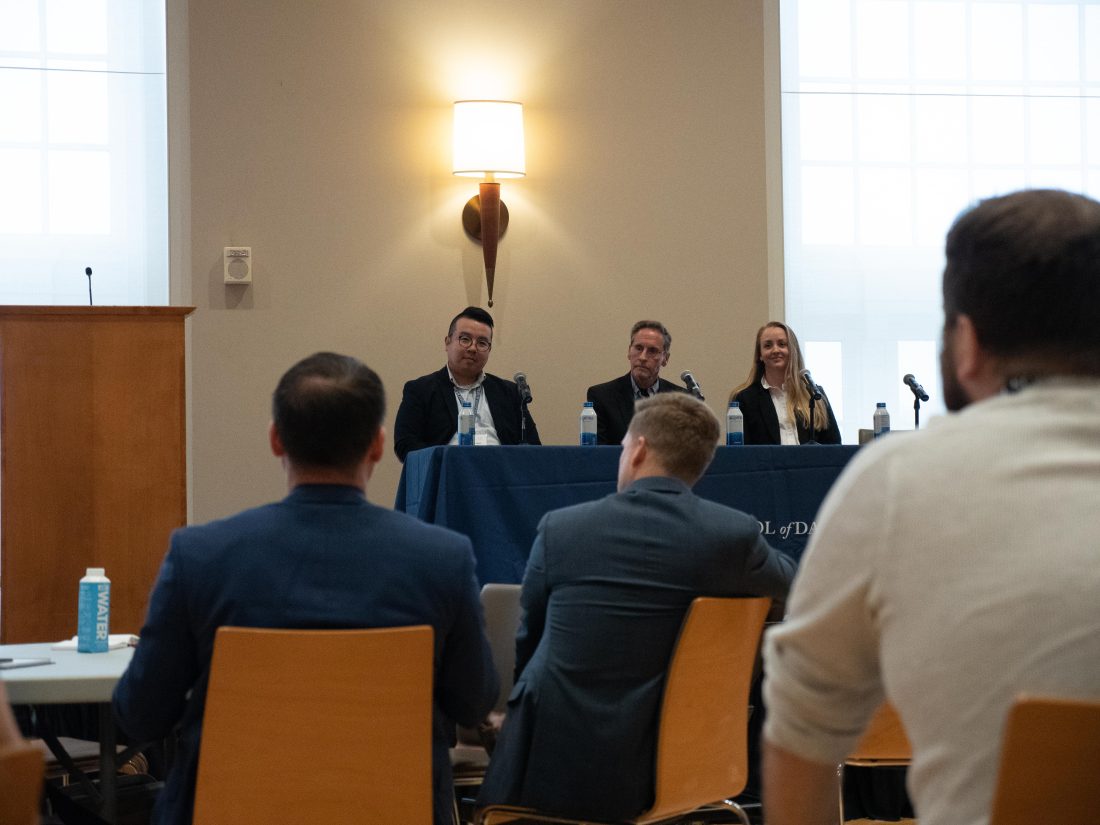Data Science and Sports: The Ultimate Team Game

Data science and sports are both fields of interest where people and teams aim to perform at their best. Although individual goals are very different, both disciplines use data to discover and understand patterns to boost performance and outcomes. This was recently illustrated at Datapalooza 2022 – the flagship event of the School of Data Science – during Research Lightning talks on “Data in Sports Science.” Three University of Virginia School faculty members discussed different aspects of how data science is being used to improve athlete health and team performance.
The first talk was on “Geometric Data Analysis in Sports” by Associate Professor of Data Science Stephen Baek. Baek spoke about how data science can track different motions of the human body to the athlete’s advantage. Over time, we’ve been able to collect data points on athlete motion that. data scientists can analyze and provide suggestions or predictors of how athletes might improve different aspects of their game. From a golf swing to a tennis serve or how quickly one gets off the starting block, all physical motion can be mapped and improved with data collection and optimization.
I particularly enjoyed Baek’s talk because I had not thought about sports from that angle before; I had viewed sports from a team perspective and not the sum of individual performance. I hadn’t considered how data science could be applied in such detail in athletics. I enjoyed learning about Baek’s research and how important these types of discoveries might be to the future of sports.
The second lightning talk titled “Sports & Design: Reframing Sports Science Within the 4+1 Model” was given by Natalie Kupperman, Assistant Professor of Data Science. Kupperman spoke about how the 4+1 model of data science can be applied to sports science. Kupperman’s background is in athletic training and kinesiology and her research focuses on athlete health and recovery. Kupperman addressed the need for athlete data to be kept secure and that teams need to follow protocols for sharing player information. Multiple individuals on a team and within an organization could have access to a player's information: the training staff could have access to a player’s health records, while the General Manager could have access to the player’s stats or other information about their performance in competition. Therefore, it is important that only the people that have a verified need have access to an athlete’s information.
The last talk in the session was “Lessons Learned (Again) Via Sports Analytics” given by William Scherer, Professor and Associate Chair of Engineering Systems and Environment. Scherer outlined different lessons that he learned regarding a recruiting model he developed for the UVA football team. Scherer discussed how even small aspects of a college football program can lead to a recruit signing elsewhere. Many of the variables in his model had more to do with making sure the athlete was in the right environment and geographic location, rather than the actual program itself. Scherer also recommended how the University’s approach to recruiting has changed with the implementation of the model.
I enjoyed how the three speakers brought various perspectives to different angles of the world of sports. From the athlete recruitment to how they move and ensuring their data is handled correctly in the 4+1 model, all three of these areas are crucial to keeping athletes performing and playing at their highest levels.


